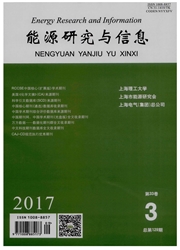

 中文摘要:
中文摘要:
A nodal discontinuous Galerkin formulation based on Lagrange polynomials basis is used to simulate the acoustic wave propagation. Its dispersion and dissipation properties for the advection equation are investigated by utilizing an eigenvalue analysis. Two test problems of wave propagation with initial disturbance consisting of a Gaussian profile or rectangular pulse are performed. And the performance of the schemes in short,intermediate,and long waves is evaluated. Moreover,numerical results between the nodal discontinuous Galerkin method and finite difference type schemes are compared,which indicate that the numerical solution obtained using nodal discontinuous Galerkin method with a pure central flux has obviously high frequency oscillations for initial disturbance consisting of a rectangular pulse,which is the same as those obtained using finite difference type schemes without artificial selective damping. When an upwind flux is adopted,spurious waves are eliminated effectively except for the location of discontinuities. When a limiter is used,the spurious short waves are almost completely removed. Therefore,the quality of the computed solution has improved.
 英文摘要:
英文摘要:
A nodal discontinuous Galerkin formulation based on Lagrange polynomials basis is used to simulate the acoustic wave propagation. Its dispersion and dissipation properties for the advection equation are investigated by utilizing an eigenvalue analysis. Two test problems of wave propagation with initial disturbance consisting of a Gaussian profile or rectangular pulse are performed. And the performance of the schemes in short, intermediate, and long waves is evaluated. Moreover, numerical results between the nodal discontinuous Galerkin method and fi- nite difference type schemes are compared, which indicate that the numerical solution obtained using nodal discon- tinuous Galerkin method with a pure central flux has obviously high frequency oscillations for initial disturbance consisting of a rectangular pulse, which is the same as those obtained using finite difference type schemes without artificial selective damping. When an upwind flux is adopted, spurious waves are eliminated effectively except for the location of discontinuities. When a limiter is used, the spurious short waves are almost completely removed. Therefore, the quality of the computed solution has improved.
 同期刊论文项目
同期刊论文项目
 同项目期刊论文
同项目期刊论文
 期刊信息
期刊信息
